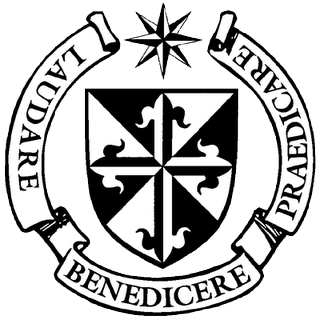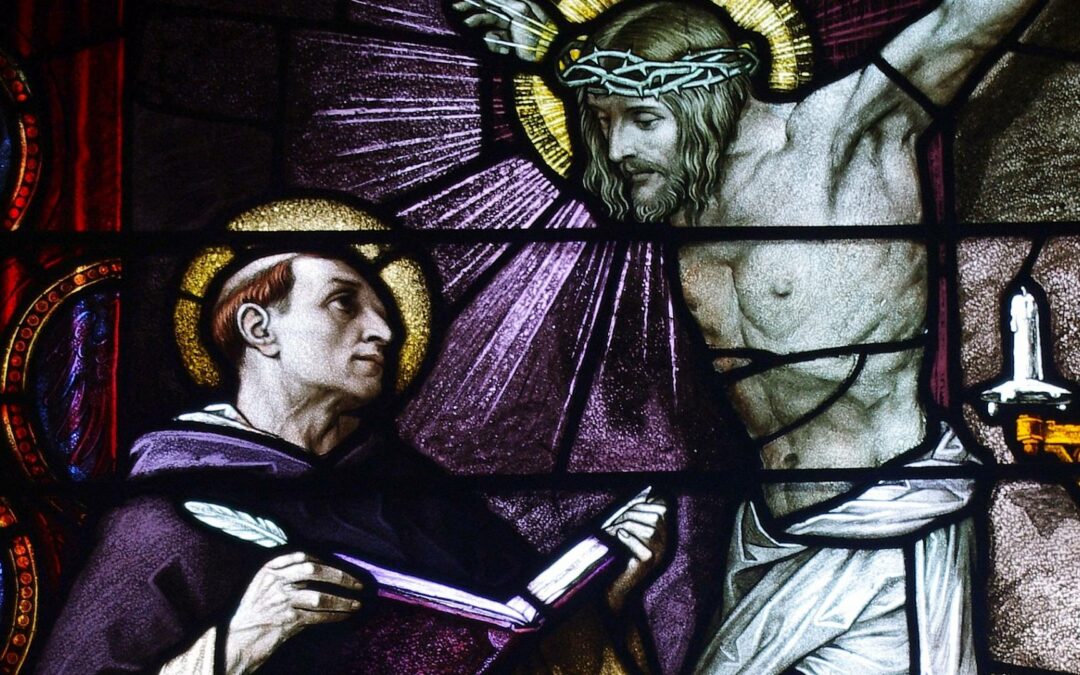
Who was Saint Thomas Aquinas
Thomas Aquinas, born around 1225 in Roccasecca, Italy, was a prominent theologian and philosopher who combined theological principles of faith with philosophical principles of reason. He was the youngest of at least nine children in a wealthy family that owned a castle in Roccasecca. As a teenager, he was influenced by the Dominicans, a newly founded order of priests devoted to preaching and learning.
Thomas joined the Dominicans at the age of nineteen and was assigned to Paris for further study. He spent three years in Paris studying philosophy and then moved to Cologne under the supervision of Albert the Great, who became his mentor. Albert’s conviction that the Christian faith could only benefit from a profound engagement with philosophy and science greatly influenced Thomas.
Thomas’s philosophical work is primarily found in the context of his Scriptural theology, and he is known for his so-called ‘five ways’ of attempting to demonstrate the existence of God. He also offered one of the earliest systematic discussions of the nature and kinds of law, including a famous treatment of natural law.
Thomas’s writings on ethical theory are virtue-centred, and he discussed the relevance of pleasure, passions, habit, and the faculty of will for the moral life. He is considered one of the most important theologians in the history of Western civilization, and his model for the correct relationship between theology and philosophy has inspired many.
Thomas died on March 7, 1274, at the Cistercian monastery of Fossanova, near Terracina, Latium, Papal State, Italy. He was canonized by Pope John XXII in 1323 and is honoured as a saint and Doctor of the Church by the Catholic Church.
Aquinas Contribution to the development of Theology and Philosophy
Saint Thomas Aquinas (1225-1274) was a Dominican friar, philosopher, and theologian who is considered one of the greatest thinkers in Western intellectual history and a key figure in scholasticism, a medieval philosophical and theological movement.
He is known for his exceptional intellect and scholarship, and his contributions to theology and philosophy continue to be widely recognized and influential today. Aquinas’s most significant work is Summa Theologica, a comprehensive systematic treatise on theology and philosophy that synthesizes and harmonizes the teachings of Aristotle with Christian theology. The work covers a wide range of topics, including the nature of God, ethics, human nature, and the sacraments, and it emphasizes the compatibility of philosophy and theology, rejecting the notion of inherent conflict between them.
Aquinas’ philosophy was marked by his commitment to reason and the integration of faith and reason. He believed that reason and revelation were complementary and that both could lead to a deeper understanding of truth. His approach emphasized the compatibility of philosophy and theology, and he provided rational arguments for the existence of God, known as the “Five Ways,” which presented philosophical justifications for belief in a transcendent Creator. Aquinas also explored the concept of natural law, asserting that there are moral principles rooted in human nature that are accessible through reason. He believed that these moral principles were universal and could be known by all people, regardless of their religious beliefs.
Aquinas’ contributions to theology and philosophy were widely recognized during his lifetime, and his influence continues to be felt today. He is often referred to as the “Doctor Angelicus” and is regarded as one of the church’s greatest theologians and philosophers.
Despite his relatively short life, Aquinas’ extensive writing and profound insights have left an enduring legacy in philosophy, theology, and Christian thought. His teachings remain a cornerstone of Catholic theology, and his approach to the relationship between faith and reason continues to inspire philosophers and theologians around the world.
How did Saint Thomas Aquinas’s ideas influence the development of Christian philosophy?
Saint Thomas Aquinas was known philosopher, and theologian who is considered one of the most important figures in the development of Christian philosophy. His ideas have had a profound influence on the relationship between faith and reason, the philosophy of language, epistemology, metaphysics, natural theology, philosophical anthropology, ethics, and political philosophy. One of Aquinas’ most significant contributions to Christian philosophy is his model for the correct relationship between faith and reason.
He believed that faith and reason were not in conflict but rather complementary, with faith providing a foundation for reason and reason providing a way to understand and defend faith. This approach has been influential in the development of Christian philosophy and theology, and it continues to be a subject of debate and discussion today.
Aquinas’ philosophy of language is also significant, particularly his concept of analogy. He believed that language about God is to be understood analogically, meaning that it is both like and unlike human applications. This concept has been influential in Christian theology and philosophy, and it continues to be a subject of study and discussion.
Aquinas’ work in epistemology, metaphysics, and natural theology has also been influential in Christian philosophy. He believed in the existence of a natural order that could be known through reason, and he argued for the existence of God through his famous “Five Ways”. These arguments have been widely discussed and debated in Christian philosophy, and they continue to be a subject of interest and study. Aquinas’ contributions to philosophical anthropology, ethics, and political philosophy have also been significant. He believed in the inherent dignity and value of human beings, and he argued for the importance of virtues and moral character in human life.
His work in these areas has been influential in Christian philosophy and theology, and it continues to be a subject of study and discussion today. Lastly, Saint Thomas Aquinas’ ideas have had a profound influence on the development of Christian philosophy, particularly in the areas of faith and reason, philosophy of language, epistemology, metaphysics, natural theology, philosophical anthropology, ethics, and political philosophy. His work continues to be studied and debated in Christian philosophy and theology, and his contributions to the field remain significant and influential.

Saint Catherine of Siena
Saint Catherine of Siena, born in Italy in 1347, was a prominent figure in the Catholic Church during the 14th century. She is best known for her mystical experiences, her role in the Avignon papacy, and her influence on the political and religious spheres of her time. As a Dominican tertiary, Catherine dedicated her life to prayer, fasting, and serving the poor. She was believed to have received numerous visions and messages from God, which she documented in her writings.
In the historical context of Saint Catherine of Siena, it is essential to understand the state of the Catholic Church during the 14th century. This was a period marked by the Avignon papacy, where the popes resided in Avignon, France, rather than Rome. This led to a significant decline in the church’s authority and integrity, as many questioned the legitimacy of the papacy. Catherine played a crucial role in urging Pope Gregory XI to return the papacy to Rome, which he eventually did in 1377.
Saint Catherine’s influence extended beyond the religious realm and into the political arena as well. She was actively involved in mediating conflicts within the Italian city-states and played a key role in negotiating peace treaties. Catherine’s diplomatic skills and unwavering faith earned her respect and admiration from both political leaders and the common people. Her ability to navigate complex and volatile environments solidified her reputation as a peacemaker and a voice of reason during tumultuous times.
Despite her immense contributions, Saint Catherine of Siena faced criticism and opposition from various quarters. Some within the church questioned the authenticity of her visions and messages, while others accused her of meddling in political affairs beyond her domain. However, Catherine remained steadfast in her beliefs and continued to advocate for justice, mercy, and reconciliation.
In the field of theology and spirituality, Saint Catherine’s writings have had a lasting impact on generations of followers. Her most famous work, “The Dialogue,” is a profound exploration of the soul’s journey to God and a testament to her deep mystical experiences. Catherine’s teachings on prayer, virtue, and love have inspired countless individuals to deepen their spiritual lives and seek union with the divine.
One of the key figures who has contributed to the study of Saint Catherine of Siena is Raymond of Capua, her spiritual director and confessor. Raymond played a crucial role in documenting Catherine’s life and writings, ensuring that her legacy would endure long after her death. His firsthand accounts of Catherine’s mystical experiences provide valuable insights into her spiritual journey and the challenges she faced.
Another influential individual in Saint Catherine of Siena is Pope Gregory XI, whom Catherine persuaded to return the papacy to Rome. Gregory’s decision to heed Catherine’s advice had far-reaching implications for the Catholic Church, restoring its credibility and authority. His collaboration with Catherine in bringing about this significant change in the church’s leadership underscores the profound impact she had on key figures of her time.
Saint Catherine of Siena was a remarkable figure whose legacy continues to inspire and challenge us today. Her unwavering faith, commitment to justice, and profound spiritual insights have left an indelible mark on the Catholic Church and the world at large. As we reflect on her life and teachings, we are reminded of the enduring power of faith, love, and compassion in shaping the course of history. Saint Catherine’s example serves as a beacon of hope and inspiration for all who strive to make a difference in the world and seek to live lives of meaning and purpose.
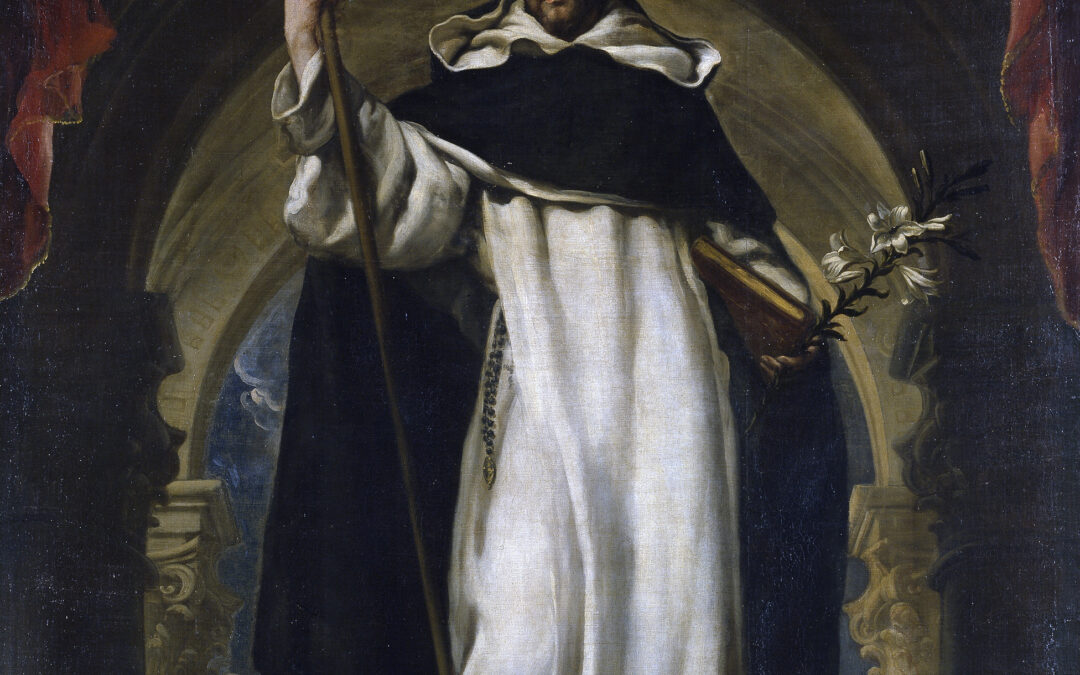
St. Dominic de Guzman
St. Dominic de Guzman, also known as Dominic of Caleruega, was a Spanish-born Catholic priest and founder of the Order of Preachers, commonly known as the Dominican Order. Born in 1170 in Caleruega, Castile, Spain, Dominic’s life was marked by a deep devotion to God, a passion for preaching, and a commitment to spreading the teachings of the Catholic Church. His legacy as a religious leader and educator has had a lasting impact on the Church and continues to inspire many to this day.
Dominic was born into a noble family, with his father being a knight and his mother a member of the Spanish royal family. From a young age, he showed a strong inclination towards the Catholic faith, and his parents ensured that he received a solid religious education. He studied theology and philosophy at the University of Palencia, where he excelled in his studies and showed a keen interest in the Bible and the writings of the Church Fathers.
After completing his studies, Dominic was ordained as a priest in 1196. He then became a canon regular in the Cathedral of Osma, where he dedicated himself to a life of prayer and study. It was during this time that he witnessed the rise of the Albigensian heresy, a sect that rejected the teachings of the Catholic Church and threatened the spiritual well-being of many in Europe.
In response, Dominic joined the efforts of the Bishop of Osma, Diego de Acebo, in preaching against the heresy and converting its followers. The two men travelled throughout southern France, engaging in debates and discussions with the heretics and offering them the true teachings of the Church. However, they soon realized that preaching alone was not enough to combat the heresy, and they needed a dedicated order of men who could devote themselves to the task.
In 1215, Dominic and Bishop Diego established a religious community called the Order of Preachers, with the approval of Pope Innocent III. The members of this order, known as Dominicans, were to live a life of poverty, chastity, and obedience and were dedicated to preaching the Gospel and combating heresies. They were also encouraged to pursue advanced education and engage in scholarly debates to defend the Church’s teachings.
Dominic’s vision for the Order of Preachers was revolutionary for its time. The Dominicans were the first religious order to focus solely on preaching and teaching rather than traditional monastic practices. They also emphasized the importance of education and intellectual pursuits, which earned them the nickname “hound of the Lord” for their pursuit of knowledge and truth.
The Order of Preachers quickly gained popularity and spread throughout Europe, establishing houses in major cities and universities. Dominic himself travelled extensively, preaching and establishing new communities. He also played an important role in the establishment of the Inquisition, a Church institution that aimed to combat heresy and protect the purity of Catholic doctrine.
In addition to his work as a religious leader, Dominic was also known for his kindness, humility, and devotion to service. He was a man of great compassion and worked tirelessly to help the poor and sick, founding hospitals and shelters for those in need. His deep love for God and his fellow human beings was evident in all aspects of his life.
St. Dominic de Guzman died on August 6, 1221, at the age of 51. He was canonized in 1234 by Pope Gregory IX and is now recognized as a saint in the Catholic Church. The Order of Preachers continues to thrive today, with over 6,000 members in more than 80 countries carrying on the legacy of St. Dominic and his commitment to preaching, teaching, and serving others.
St. Dominic de Guzman’s life is a testament to his unwavering faith, dedication to the Church, and passion for preaching. His legacy as the founder of the Order of Preachers has had a lasting impact on the Catholic Church, and his teachings and examples continue to inspire people to live a life of service and devotion to God. St. Dominic’s life is a shining example of how one person’s vision and dedication can have a profound effect on the world.

The Priory of St. Dominic celebrated Easter Vigil on March 31st at 10:00 pm. The great night was filled with joy and solemnity. After the mass, the community and the faithful gathered to share some refreshments.


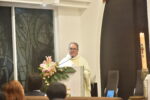


On this Good Friday in the Diocese of Macao, the Bishop, Religious Priests and Sisters, and the faithful gather together in a solemn procession of the Way of the Cross. Starting in Flora Garden and culminating at the top of Guia Hill, this annual tradition organized by the lay faithful in the Diocese of Macao holds deep significance for the faithful to enter into a spiritual journey towards Easter.
The Bishop, Religious Priests and Sisters, and the faithful united in the procession carry the weight of the Cross not just symbolically but with hearts open to the depth of Christ’s sacrifice.
In the footsteps of Jesus, they contemplate His suffering, His love, and His ultimate victory over sin and death. Each step taken in this procession echoes the journey of faith, inviting all to meditate on the cost of redemption and the boundless mercy of God. The Way of the Cross in Macao becomes a testimony of faith, a communal prayer of gratitude, and a pilgrimage of the heart.
On Good Friday, we reflect on the profound sacrifice that Jesus made for all of humanity as He walked the way of the Cross. Take us through Jesus’ journey to Calvary, where He bore the weight of our sins and endured unimaginable suffering out of love for us.
As we meditate on each Station of the Cross, we are invited to enter into the mystery of Christ’s passion and death, to contemplate His humility, His obedience to the Father’s will, and His boundless love for each one of us. We see Jesus’ unwavering resolve and His willingness to carry the Cross, knowing that it would lead Him to the ultimate sacrifice for our redemption.
The Way of the Cross reminds us of the reality of sin and the cost of our salvation. It challenges us to reflect on our own crosses, struggles, and sufferings and to unite them with Christ for the greater glory of God. Through the Stations of the Cross, we are called to embrace our own crosses with faith and courage, trusting in the promise of Easter joy and the victory of Christ over sin and death.
As we journey with Jesus along the Way of the Cross, may we be inspired to live lives of selflessness, compassion, and sacrificial love? May we find strength in Christ’s example and draw closer to Him as we contemplate His passion and death on this Good Friday. May we carry our crosses with hope and perseverance, knowing that through the Cross, we find redemption and eternal life in Him.
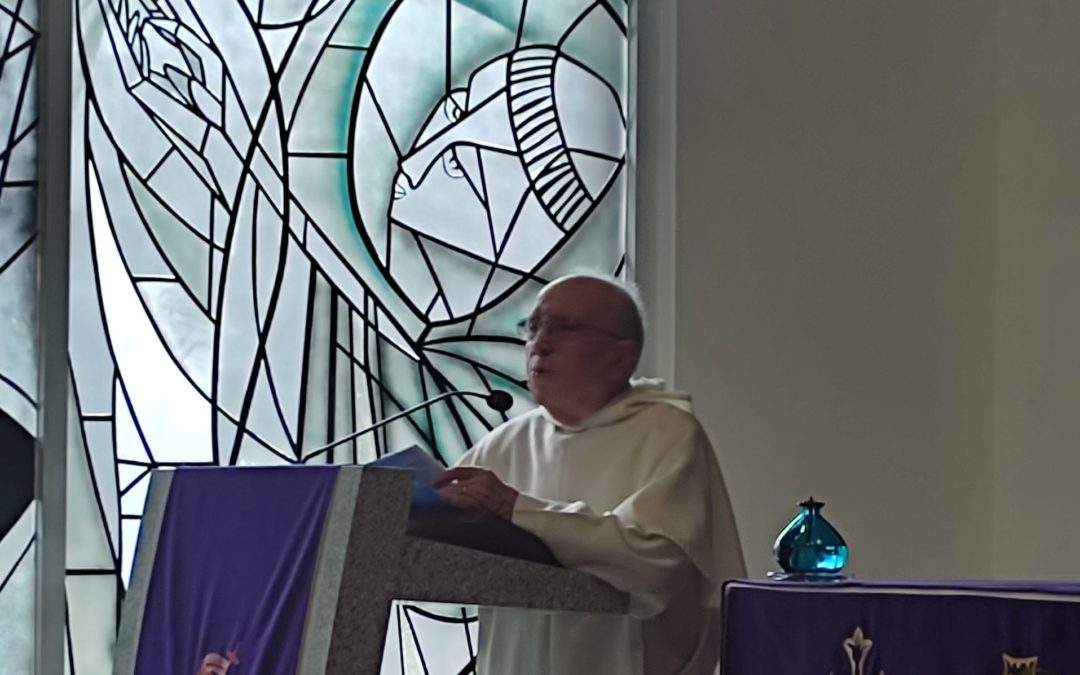
We begin our Holy week with recollection, which is an invitation for us to reflect on two questions (Fr. Fausto Gomez OP).
Who is Christ for you?
According to the Scriptures, Christ is revealed to us in Scripture as the Son of God, the Savior of the world, the Word made flesh who dwelt among us (John 1:14). He is the fulfilment of the Old Testament prophecies and the embodiment of God’s love and mercy for humanity.
In the teachings of the Church, Christ is acknowledged as the Second Person of the Holy Trinity, fully God and fully man, who came to earth to redeem humanity through His life, death, and resurrection. The Catechism of the Catholic Church affirms that Jesus Christ is the “one mediator between God and men” (1 Timothy 2:5) and the source of our salvation (CCC 846).
In our personal experience encounter with Christ, we are called to live in His presence, His grace, and His transformative power in our own life. Through prayer, the sacraments, Scripture reading, and acts of service, many people have encountered Christ in a personal and profound way, feeling His love, guidance, and peace in their lives.
Christ is our Lord and Savior, the source of hope and strength in times of trial, and the model of love and compassion that we strive to emulate in our own life. Through His teachings and example, we are called to love God and our neighbour, to seek justice and mercy, and to live a life of faith, hope, and charity.
Therefore, Christ is not only a historical figure but a living presence in our lives, inviting us into a relationship of love and communion with Him. He is the Way, the Truth, and the Life (John 14:6), calling us to follow Him, to trust in Him, and to bear witness to His love and salvation in the world.
May our understanding of who Christ is deepened through the study of Scripture, the teachings of the Church, and our personal encounters with Him, leading us to a deeper faith, a stronger commitment to discipleship, and a greater love for the Lord who gave Himself for us.
Where is Christ Today?
Christ is present everywhere, and Christ is living among us, in our lives and in our deeds.
- “In the Eucharist”: One of the most profound ways that Christ is present today is in the Eucharist. In the Gospel of Matthew 26:26-28, Jesus institutes the sacrament of the Eucharist during the Last Supper, saying, “Take and eat; this is my body… Drink from it, all of you. This is my blood of the covenant, which is poured out for many for the forgiveness of sins.” In the Eucharist, Christians (Catholics) believe that the bread and wine truly become the body and blood of Christ. Therefore, when we receive the Eucharist, we are in communion with Christ in a very real and intimate way.
- “In the Church”: Christ is present in His mystical body, the Church. In the Gospel of Matthew 18:20, Jesus says, “For where two or three gather in my name, there am I with them.” As believers come together in worship, fellowship, and service, Christ is present among them. This presence is not just symbolic but real as Christ continues to work through His Church to bring about His kingdom on earth.
- “In the Word of God”: Christ is present in the Scriptures, as the Word made flesh. In the Gospel of John 1:14, it is written, “The Word became flesh and made his dwelling among us.” When we read and meditate on the Bible, we encounter Christ and His teachings. Through the Scriptures, Christ continues to speak to us, guide us, and reveal God’s plan for salvation.
- “In the Poor and Needy”: In the Gospel of Matthew 25:40, Jesus says, “Truly I tell you, whatever you did for one of the least of these brothers and sisters of mine, you did for me.” Christ is present in the faces of the poor, the marginalized, and the vulnerable. When we reach out to them with love, compassion, and support, we are ministering to Christ Himself.
- “In the Sacraments”: Christ is present in the sacraments of the Church, which are visible signs of God’s grace. Through the sacraments, such as Baptism, Confirmation, Reconciliation, and Matrimony.

